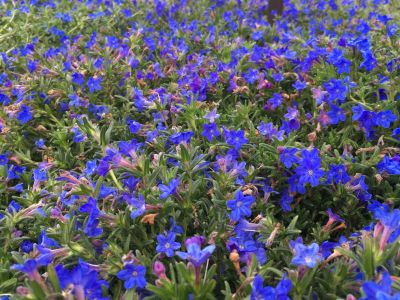Is Lithodora frost hardy? Keep reading to find out.
Is Lithodora Frost Hardy?
If you want a no-fuss, easy-to-grow, sprawling, blooming beauty, try growing Lithodora. It grows natively in a Mediterranean climate and needs plenty of water to produce an abundance of flowers. It blooms in spring, but in some climates, a second bloom in summer can be expected. Northern gardeners may have to provide Lithodora with winter protection, due to its half-hardy nature. Cold tolerance for these plants runs in the USDA hardiness zones 6 to 9. However, some gardeners have learned ways of winterizing Lithodora plants into zone 5. Severe, sustained freezing can damage the stems and possibly the roots, where drainage isn’t optimal. While this plant prefers moderate temperatures and moist soil, it does not do well in southern heat and humidity. It also cannot thrive in regions with long, extremely cold temperatures. Moderate conditions are best for this particular plant. If you are concerned about the plant’s longevity in cold sites, provide some winter protection with freeze shield cloth or mulch. A potted situation offers the easiest Lithodora winter protection.
How to Overwinter Lithodora
Since Lithodora cold tolerance is spotty, northern gardeners should grow the plant in containers and bring it indoors for winter or provide a microclimate outside where the plant has some protection. Select a location with some screening from drying winds and cold northern weather. A south-facing slope or tucked into a rockery away from wind would be ideal. When winterizing Lithodora plants, mulch around outdoor plants to protect roots from freezing, while also providing a barrier to many weeds.
Lithodora Winter Damage and Care
If stems are black as spring approaches, they likely were damaged in a cold snap. Trim off dead stems to encourage new growth and improve the plant’s appearance. Alternatively, you can wait until the bloom is over and shear the entire plant back to promote compact growth. Fertilize in early spring with a time-release formula. Water in well after applying. Pull mulch away from the plant in spring to allow new stems and growth to emerge. Harden off plants, that were overwintered indoors, before installing them in the ground or leaving them permanently outdoors for the warm season.
